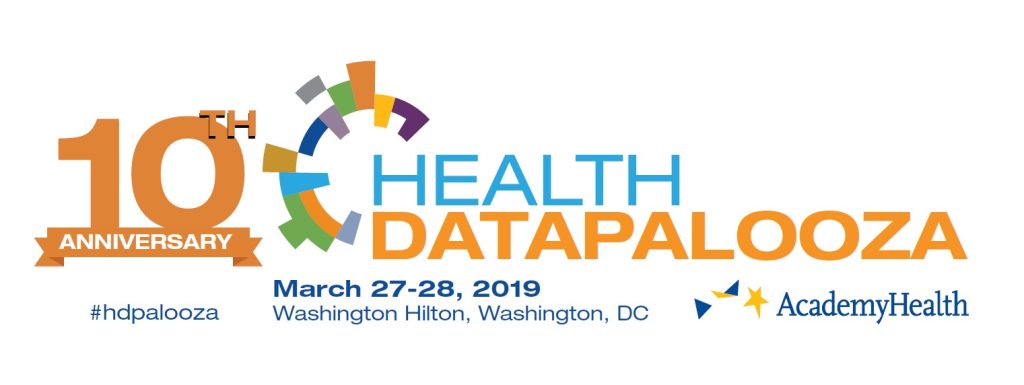
Mar 7, 2019
UPMC investing in data analytics, despite changes in health care
This month at the annual Health Datapoolza (HDP) Dr. Pamela Peele and Dr. Rebecca Jacobson, take the stage to discuss how health care and data intersect and why this is a vital focus for the industry.
Making data work for us in new ways is expanding industries from education to banking, but distinct challenges in health care are slowing the adoption of data analytics. UPMC recognizes the tremendous potential for data analytics to unlock new frontiers in health care and is working to overcome the difficulties. This reason, among many others were the reason why HDP was born 10 years ago.
In an effort to showcase the need for open data and highlight the collaboration between public and private sectors, HDP discusses the current landscape, technologies to solve these problems and what the future of health care data looks like. UPMC’s Chief Analytics Officer, Pamela Peele, PhD, and UPMC Enterprises’ Vice President of Analytics, Rebecca Jacobson, MD, dive into UPMC’s approach to data science and the significance of data analytics to UPMC and the industry.
A recent Brookings Institute white paper highlights the unique challenges of data analytics in health care, paints a picture of an industry lagging behind others when it comes to data analytics. Among the challenges outlined by the report are the sensitivity of care decisions, wide variety of data standards used, diversity in practice, and misaligned incentives in the health care industry.
“Despite the immense promise of health analytics, the industry lags behind other major sectors in taking advantage of cutting-edge tools,” the report states. “Most health care organizations, for example, have yet to devise a clear approach for integrating data analytics into their regular operations.”
Brookings goes on to suggest that the challenges “might be more substantial in the health care field than in other parts of the economy.” To Dr. Peele the challenges outlined by the report ring true. While UPMC is making strides to put its data to work in a variety of ways that can improve care and reduce costs, it is an expensive endeavor that will take time.

“Even when incentives align, as they do between payer and provider in an integrated finance and delivery system like UPMC, a powerful challenge remains: investment,” Dr. Peele said. “The data have historically been so siloed, that to overcome the disseverance is incredibly expensive — and that’s true even within singular organizations.”
But the disparate systems of the past are not the way of the future, and there is plenty of reason to be optimistic that health care will continue to make data work harder. First, new solutions are rapidly changing the health care data landscape and helping health care entities further their analytics capabilities.
Cloud computing, for example, holds the promise to decrease operational costs while making a much wider variety of analytic methods available, so that health systems can do much more with limited analytics expertise. UPMC Enterprises uses cloud infrastructure, coupled with methods developed in-house, to power data analytics in its innovations.
Second, UPMC and others are making investments to maximize data. Teams of data scientists, divisions devoted to analytics, and business units working toward innovation that will make data more accessible are all signs of commitment to using data for better health care.
To succeed in health care innovation, data scientists and engineers should have some level of industry expertise or understanding, but this can be taught. “There is a shortage of data scientists with health care experience,” Dr. Peele said. “But we train people. What matters most are skill and curiosity. In this industry, the curiosity of talented data scientists has the potential to improve the lives of lots of people.”
At UPMC Enterprises, there are currently two data analytics teams. One focuses on machine learning and one on Natural Language Processing, with some degree of cross-over. Combined, these teams work on multiple analytics-driven products, build methods and tools, support pilot programs, test products, and work closely with other divisions of UPMC, such as UPMC Health Plan, the Wolff Center of UPMC, and UPMC Hillman Cancer Center.
Dr. Jacobson, previously worked in an academic setting. What’s uniquely challenging about a job in data science at a health system is the end goal.

“At Enterprises, we focus on understanding how the innovation fits into health care workflows and thinking ahead to user design and deployment,” Dr. Jacobson said. “We also strive to create software products that can function reliably and at scale in a health care setting.”
Third, innovation at the organizational level may result in greater partnership across the health care ecosystem, and more opportunities for what Brookings described as “well-integrated data strategy.” This can be seen in systems like UPMC that have taken steps to better align to deliver greater value to patients through integrated finance and delivery system models.
“Analytics is so integral to strategy at UPMC, that I think of it as the muscle responsible for pulling our organization into a new era of care,” Dr. Peele said.

Learn more about the latest regulations and policies regarding data analytics at the 10th Annual Health Datapalooza conference March 27-28th. Join Adam Berger, PhD, Chief Technology Officer, UPMC Enterprises, Dr. Peele, and Dr. Jacobson at this two-day summit. Join Dr. Berger in a panel discussion on the reality of artificial intelligence in health care. The panel, “AI in the Real World: Expectation vs. Reality,” will be moderated by Jonathan Symonds, Chief Marketing Officer of Ayasdi Inc., and feature Bill Adams of Intermountain Healthcare, and Patricia Kipnis and Sabrina Dahlgren of Kaiser Permanente.


